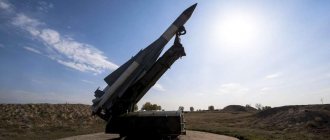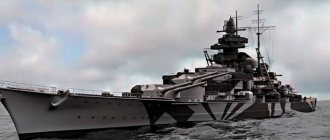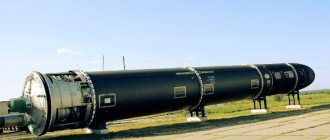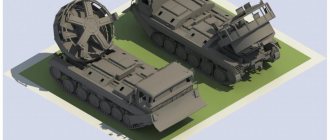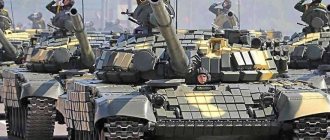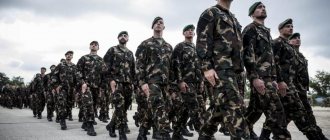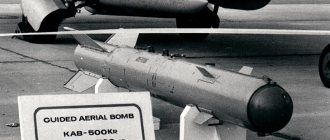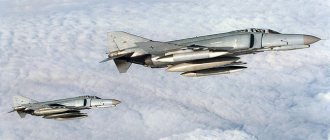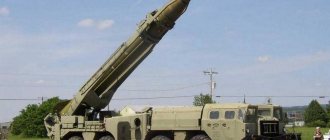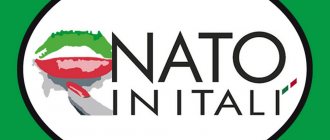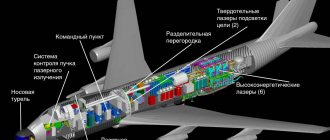Armed Forces of Turkmenistan
(National Army of Turkmenistan) is a state paramilitary structure designed to repel aggression directed against Turkmenistan, for the armed defense of the territorial integrity and inviolability of the territory of Turkmenistan. It is an integral part of the totality of military organizations of Turkmenistan.
The Armed Forces of Turkmenistan consist of military command and control bodies, military units, formations, military bodies, military enterprises and military educational institutions.
Content
- 1 History of the Armed Forces of Turkmenistan
- 2 Military districts
- 3 Leadership and management of the Armed Forces of Turkmenistan 3.1 Ministry of Defense of Turkmenistan
- 3.2 General Staff of the Armed Forces of Turkmenistan 3.2.1 Organizational structure of the General Staff of the Armed Forces of Turkmenistan
- 3.2.2 Leadership of the General Staff of the Armed Forces of Turkmenistan 3.2.2.1 Chiefs of the General Staff of the Armed Forces of Turkmenistan
- 4.1 Ground forces (ground forces)
- 4.3.1 History of the Turkmenistan Navy
History of the Armed Forces of Turkmenistan
The Armed Forces of Turkmenistan were created on January 27, 1992 in accordance with Article 15 of the Constitutional Law of Turkmenistan “On Independence” dated October 27, 1991 on the basis of formations of the Turkestan Military District (TurkVO) of the Armed Forces of the USSR.
On July 31, 1992, in Moscow, President of the Russian Federation Boris Yeltsin and President of Turkmenistan Saparmurad Niyazov signed the “Agreement on Joint Measures in Connection with the Creation of the Armed Forces of Turkmenistan”, according to which the Joint Russian-Turkmen Command of the Armed Forces of Turkmenistan was created, which was subordinate to the General Staff Armed Forces of the Russian Federation.
The “Agreement between the Russian Federation and Turkmenistan on the legal status and conditions of stay of air defense and air force units of the Russian Federation on the territory of Turkmenistan” was also signed here.
In 1994, the Joint Russian-Turkmen Command of the Armed Forces of Turkmenistan was dissolved, and operational control of the Armed Forces of Turkmenistan passed to the newly created General Staff of the Armed Forces of Turkmenistan.
Arms market of Turkmenistan: realities and prospects
Economic growth in recent years has allowed Turkmenistan to begin allocating certain funds for the modernization and renewal of the material part of its Armed Forces
Together with other Central Asian republics, Turkmenistan was one of the last to leave the USSR, declaring independence in October 1991. The country experienced a relatively painless transformation associated with the transition from a planned to a market economy and overcoming the consequences of the collapse of the unified economic system of the USSR.
The first president was Saparmurat Niyazov (first secretary of the Central Committee of the Communist Party of the Turkmen SSR in 1985-1991), who established a moderately authoritarian regime that ensured the preservation of long-term stability. The formation of the foreign and domestic policies of Turkmenistan was determined by, on the one hand, the smallest population in the region (5.05 million people), scattered over a large territory and concentrated in the border areas with the almost deserted center of the country occupied by the Karakum desert; on the other hand, there are significant hydrocarbon reserves.
As an integral part of the national economic complex of the USSR, the economy of Turkmenistan was distinguished by a pronounced raw material orientation. On the other hand, it is characterized by a certain “simplicity” in comparison with the commodity-based economies of the two other most developed republics of Soviet Central Asia - Kazakhstan and Uzbekistan, which had significantly more economic ties both among themselves and with other republics of the USSR. The country has traditionally occupied one of the leading places in terms of raw cotton production. As rich hydrocarbon deposits were discovered in the post-war period - natural gas in the Amu Darya basin, and, to a lesser extent, oil on the Caspian Sea shelf, the foundations were laid for the industrial development of the fuel and energy complex. Historically, Turkmen gas, once integrated into the unified gas pipeline system of the USSR, was used primarily to cover a significant part of the fuel and energy balance of Ukraine. All Turkmen gas, with the exception of relatively small volumes intended for domestic consumption, entered the all-Union network through the Central Asia-Center pipeline system. This network connects the gas-producing regions of the country through the territories of neighboring Uzbekistan and Kazakhstan with the central regions of Russia, connecting to a network of pipelines leading to Ukraine with possible access to Europe.
In the 1990s. The country's political elite, led by Saparmurat Niyazov, under the auspices of the Democratic Party of Turkmenistan (DPT), managed to maintain stability and control over the economy, refusing to carry out market reforms. This became possible thanks to strict price regulation and the creation of a system of free distribution of gas and electricity among the country's residents.
The DPT was founded on December 16, 1991. The party became the successor to the Communist Party of the Turkmen SSR and until 2013 was the only political party in the country. In conditions of concentration of financial resources in the fuel and energy complex, the president and his inner circle played a key role in the redistribution of gas rent within the economic system and the creation of various institutions of the young state from scratch. The main instrument of foreign policy has become the concept of “positive neutrality,” which provides for non-participation not only in military alliances, but also in any “interstate alliances with strict regulatory functions or implying collective responsibility.” An equally important, although doctrinally incompatible with neutrality, feature of the country’s foreign policy was the de facto supported military alliance with Russia.
The neutral status provided the Republic of Tajikistan with significant freedom of foreign policy maneuver, which made it possible to concentrate efforts on organizing the transit and sale of hydrocarbons, protected the ruling regime from outside interference, and also made it possible not to incur costs on foreign policy activities. The country avoided participating in the Tajik settlement, established trade and economic relations with Iran, and maintained close political and economic relations with the Rabbani government and the Taliban movement. Moreover, until the beginning of 1994, the Armed Forces of Turkmenistan were under a joint Russian-Turkmen command, and the country’s borders with Iran and Afghanistan were protected by Russian border guards until the end of 1999.
By the end of the 1990s. Ashgabat began to interpret neutrality as self-isolation. Foreign contacts of the country's leadership were reduced to a minimum, the country isolated itself from international cooperation and introduced a visa regime with the CIS countries in 1999. Relations with Russia became more tense due to the fact that since the end of 1993, Gazprom stopped allocating Tatarstan export quotas to the countries of Central and Eastern Europe, redirecting Turkmen gas to low-paying consumers - Ukraine and the Transcaucasian states. The dispute with Azerbaijan over the ownership of the Serdar (Kyapaz) gas field and disagreements over the distribution of quotas for gas transportation along the projected trans-Caspian pipeline predetermined tension along the Ashgabat-Baku line. In the last years of Niyazov’s rule, the search for opportunities to diversify gas export destinations focused on two routes: trans-Afghan and Chinese. The trans-Afghan option, despite the signing in May 2002 by Turkmenistan, Afghanistan and Pakistan of an agreement to support the project, did not overcome the difficulties associated with finding investors in expensive and extremely risky construction. The Chinese direction turned out to be much more promising: during Saparmurat Niyazov’s visit to Beijing, an agreement was concluded on the construction of the Turkmenistan-China gas pipeline and the export of 30 billion cubic meters of gas per year to China from 2009.
After the death of Saparmurat Niyazov in December 2006, Turkmenistan was headed by Health Minister Gurbanguly Berdimuhamedov. The President of the Republic still has unprecedented powers in his hands: he combines the posts of head of state, prime minister, Supreme Commander-in-Chief of the Armed Forces of the Republic of Tajikistan and chairman of the Democratic Party of Turkmenistan. The presidential elections of 2007 and 2012, conflict-free and controlled, served as a factor in the international legitimization of the regime.
Formed in the 1990s. The regime under the auspices of the dominance of the DPT is undergoing a gradual transformation from a moderate authoritarian system with elements of the cult of personality of the first president to bureaucratic state capitalism with a special position for the intelligence services, as well as the top management of the oil and gas industry in the decision-making system in the economy. In addition, the institutional design of the political system will be modified in connection with the inevitable change of generations in the state apparatus in the medium term.
Security challenges
Security challenges for Turkmenistan can be divided into two groups: external and internal.
The key internal problem remains the economy's dependence on hydrocarbon exports. The country is characterized by a social environment deformed by growing inequality, suffering from an influx of enclave and focal distribution of economic benefits. The majority of the population is not included in economic relations associated with the extraction of resource rent from the export of hydrocarbons. In the event of a shock drop in energy prices, existing social contradictions will inevitably become actualized and will inevitably develop into inter-clan or inter-tribal conflict.
On the external front, one of the main threats is Afghanistan. Attacks on Turkmen border posts throughout the winter, spring and summer of 2014 stand in stark contrast to the calm on the Afghan-Turkmen border under President Niyazov. A number of media outlets consider these events in connection with ISIS. The pessimistic scenario indicates the preparation of operational corridors for a breakthrough across the Afghan-Turkmen border. Given the experience of contacts of Turkmen special services with the Pashtun Taliban movement (and contacts with the official government of Afghanistan), it is possible to link these attacks to a number of radical Salafi groups that may be targeted at Qatar, which has recently shown interest in the region.
Traditionally, the Republic of Tajikistan has had difficult relations with Azerbaijan due to the status of the Caspian Sea and disagreements over the distribution of quotas for gas transportation through the projected trans-Caspian pipeline. Relations between the two countries improved somewhat during the presidency of Gurbanguly Berdimuhamedov. In August 2010, supplies of Turkmen oil began through the Baku-Tbilisi-Ceyhan oil pipeline; Turkmen oil is delivered to Baku by tankers. However, the delimitation of spheres of influence in the Caspian Sea will continue to negatively affect relations between the two countries in the coming years.
The country has complex relations with Uzbekistan, which a number of experts have recently called the powder keg of Central Asia. The terrorist organization Islamic Movement of Uzbekistan poses a potential threat.
Military doctrine
The Turkmen authorities have taken the path of forming a small but combat-ready army, “sufficient to protect state integrity and national sovereignty from possible aggression.” Of course, the Turkmen government was not able to manage only on its own when creating the national armed forces. In July 1992, Russia and Turkmenistan entered into an agreement on joint actions in the field of defense. In accordance with this document, Russia acted as a guarantor of the security of Turkmenistan and transferred units of the former Soviet Army stationed on Turkmen territory to form the national Armed Forces. The agreement specified that, in addition to units and subunits of the Border Troops, Air Force and Air Defense, which remain under Russian command, all other military formations will come under unified command with the gradual transfer of leadership to the Turkmen side over 10 years. During this transition period, Russia pledged to provide military-technical and operational-tactical support, as well as pay compensation to the Turkmen side for the right to deploy its equipment on its territory, while Turkmenistan assumed the costs of maintaining and providing units of joint subordination.
On March 25, 1994, the military doctrine of Turkmenistan was promulgated, which determined the main directions of the military development of an independent state for the subsequent period. Conceptually, the doctrine is based on the principles of “positive neutrality”, and the main military danger for the country is represented by possible local wars and armed conflicts in neighboring states. In the sphere of ensuring the military security of the republic, three main directions can be distinguished: the Caspian, Afghan and Uzbek.
In April 1994, a reorganization of the military structure was announced: the Ministry of Defense of Turkmenistan began to take control of formations and units of air defense and air force troops from the Russian Armed Forces stationed in the country. However, Russian specialists took part in maintaining the combat effectiveness of air defense on the territory of the republic for some time.
The recruitment of Turkmen Armed Forces with conscripts occurs on an extraterritorial basis. To prevent imbalance, conscripts from one region are sent to districts where the vast majority of the population belongs to other tribal groups. The Turkmen army, unlike many developing countries, is freed from police functions and does not and does not intend to conduct combat operations within the country. At the same time, the army itself can pose, at least potentially, a threat to the ruling regime. The means of preventing such a threat are quite traditional: rotation of top management and territorial rotation, i.e. The service area is as far as possible from the place of birth or conscription.
In 2008, a new version of the military doctrine was adopted, the key element of which is to ensure improved living conditions and material well-being for military personnel and members of their families. In August 2009, Gurbanguly Berdimuhamedov signed a law on the status and social protection of military personnel and members of their families.
Military spending
Turkmenistan has the third military budget in absolute figures among the countries of Central Asia (after Uzbekistan and Kazakhstan). Military spending is constantly growing. If in 2004 they amounted to $165 million, then in 2011 they increased to $210 million, which amounted to 0.3% of the republic’s GDP. Expenditures on the country's intelligence services amounted to about $70 million in 2012. The influx of revenue from gas contracts with China made it possible to begin purchasing new weapons and military equipment in Russia and Turkey.
Armed Forces and State Border Service
Based on the areas of application, the Armed Forces of the Republic of Turkmenistan are characterized by a three-service structure: Ground Forces, Air Force and Air Defense Forces, Naval Forces. The transition of the Armed Forces to a brigade basis has not been completed; the troops retain a mixed structure. As a rule, divisions (brigades) are not fully staffed with personnel (mainly with security and service forces) and in their functions are close to mobilization points and weapons depots.
Direct leadership of the Armed Forces is exercised by the General Staff of the Ministry of Defense, to which the commanders of the military districts report.
The number of regular army in 2013 was 22 thousand military personnel, including 17 thousand in the Ground Forces, 3 thousand in the Air Force and Air Defense Forces, up to 2 thousand in the Navy.
As already noted, the country’s armed forces were formed on the basis of a very large group of troops from the Soviet Turkestan district that came under the jurisdiction of the republic. Therefore, on the one hand, the Turkmen army did not experience a shortage of material, on the other hand, it was faced with a chronic shortage of officers and technical specialists, since, unlike the Ministry of Internal Affairs and the National Security Committee, it did not have the opportunity to use Soviet specialists. The practice of widely involving Armed Forces personnel in work in the national economy also had a negative impact on their combat effectiveness.
The State Border Service was formed with the participation of Russian specialists, the starting point was the agreement of August 27, 1992, according to which it was decided to create border troops of Turkmenistan on the basis of formations and units of the Soviet Central Asian border district. The coordination of the troops' activities was entrusted to the joint command of the Border Troops. On December 23, 1993, an interstate agreement was concluded, which became the basis for the joint protection of external borders. In March 1994, an operational group of the Federal Border Service was formed, numbering more than 3 thousand people. The last detachments of Russian border guards were withdrawn in 1999. Now the number of the border service of the Republic of Tatarstan is about 12 thousand people. Its effectiveness remains extremely limited, including in comparison with other Central Asian states.
Ground troops
The country's territory is currently divided into five military districts. The Ground Forces of Turkmenistan include four motorized rifle divisions (one training), two motorized rifle brigades, an air assault battalion, one artillery brigade, one missile brigade, two air defense brigades, a regiment of multiple launch rocket systems, an anti-tank artillery regiment, and an engineer regiment.
The Ground Forces are armed with 10 T-90S tanks; 670 T-72 tanks; 170 armored vehicles BRDM-1 and BRDM-2; 930 BMP-1 and BMP-2 infantry fighting vehicles; 12 BRM; 820 armored personnel carriers BTR-60, BTR-70 and BTR-80; 40 122-mm self-propelled guns 2S1 “Gvozdika”; 16 152-mm self-propelled guns 2S3 “Acacia”; 180 122-mm towed howitzers D-30; 17 152-mm towed howitzers D-1; 72 152-mm towed howitzers D-20; 17 SAO 2S9 “Nona-S”; 56 MLRS BM-21 "Grad"; 9 MLRS 9P138 “Grad-1”; 60 MLRS 9Р140 “Hurricane”; 6 MLRS VM9A52 “Smerch”; 40 air defense systems 9K33 “Osa”; 13 air defense systems 9K35 "Strela-10"; 10 OTRK 9K72 "Elbrus"; 48 ZSU-23-4 “Shilka”; 22 57-mm S-60 anti-aircraft guns.
Air Force and Air Defense Forces
This structure is considered one of the most combat-ready in the country's Armed Forces. Its further development is connected with the strengthening of bases in Ashgabat and Mary. The development of aviation should ensure reliable protection of the country's energy interests in the Caspian Sea. Aviation is used to patrol the sea, compensating for the insufficient power of the fleet. The Air Force and Air Defense Forces include three aviation regiments, an anti-aircraft missile brigade, three anti-aircraft missile regiments, and two separate radio engineering brigades.
The Air Force of Turkmenistan has 24 MiG-29 multirole fighters; 43 Su-25 attack aircraft; one light transport aircraft An-26. The Army Aviation has 10 Mi-24 attack helicopters and eight Mi-8 transport and combat helicopters. The air defense forces are armed with the S-75, S-125 and S-200 anti-aircraft missile systems.
The main problem of the Air Force and Air Defense Forces remains the lack of specialists. There is no public data on average flight hours per year, but according to SIPRI, it is one of the lowest in the CIS.
Naval forces
The country's leadership pays increased attention to the development of the Navy. The key task of the Navy is to protect and ensure the integrity of the border and economic interests of Turkmenistan, due to the unresolved legal status in the Caspian Sea, and the need to protect the emerging national drilling fleet. The Turkmenistan Navy received independent status in 2010. Its headquarters is located in Turkmenbashi (formerly Krasnovodsk).
Despite the attention of the country's leadership, the Turkmen fleet remains one of the weakest in the Caspian Sea. The Turkmenistan Navy is represented by missile and patrol boats. Two Project 12418 Molniya missile boats, designed by the Almaz Central Marine Design Bureau, entered service in 2011-2012. Two Tuzla-class patrol ships, developed by the Turkish company Dearsan Shipyard, were put into service in 2013. In addition, the Navy includes 10 Grif-class patrol boats (projects 1400 and 1400M) of Soviet and Ukrainian construction, a boat of project 14081 "Saiga" from the maritime border forces of the USSR, one Point-type boat transferred by the US Coast Guard, several Kalkan-M type boats built in Ukraine, and a Project 1252 minesweeper Korund.
The Navy also includes a battalion of Marines.
Procurement policy
Since the collapse of the USSR, Turkmenistan has pursued a neutral course, equally distancing itself from Russia and trying to minimize any external influence on its internal affairs from the United States, as well as leading EU countries. Russian specialists played an important role in the creation of the Armed Forces and the State Border Service of Turkmenistan. The Turkmen Armed Forces and special services did not lack material resources, using excess quantities of weapons and military equipment inherited from the USSR Armed Forces. Scarce components for air defense systems were supplied from Russia.
As already mentioned, the “gas issue” had a negative impact on the military-political and military-technical ties between Russia and Turkmenistan: in October 1993, the Gazprom concern finally closed access for Turkmen gas to pipeline networks for gas export to Europe. The main consumers of Turkmen gas were Ukraine and the Transcaucasian states, which, in the context of the transition to the world level of prices in convertible currencies, were chronically insolvent. Under these conditions, Ukraine becomes the main military-technical partner of Turkmenistan. To offset Ukraine's debt, a contract was signed for the construction of 20 Kalkan-class patrol boats for the State Border Service of Turkmenistan, but due to financial disagreements, only eight of them were actually built. Three Kolchuga-M electronic intelligence stations were purchased. 10 MiG-29 fighters were repaired for the Air Force in 2000-2003. Georgia became the second partner in the field of military-technical cooperation: Su-25 attack aircraft were repaired at Tbilisi Aviation, one Su-25KM, modernized with Israeli assistance, and six Su-25UB were purchased. These works were also carried out to pay off debts. However, since 2011, Turkmen Su-25s have been maintained at aircraft repair plant No. 121 in Kubinka, probably due to TAM’s inability to carry out repair work due to the breakdown of cooperation ties with Russian suppliers.
In recent years, Turkmenistan has stepped up arms purchases, expanding the scope of military-technical cooperation with Russia and Turkey.
In 2009, a contract was signed with Rosoboronexport for the supply of 10 T-90S tanks worth $16 million, deliveries were made in 2009-2010. At the same time, Turkmenistan acquired at least eight BMP-3 infantry fighting vehicles, more than a thousand KamAZ trucks worth about $100 million, six Smerch MLRS of 300 mm caliber for $70 million. In addition, the contract was completed in 2010 for the supply of two Mi-17-1V helicopters worth $22 million. For the Navy of Turkmenistan, the Sredne-Nevsky Shipyard manufactured two Project 12418 Molniya missile boats worth $170 million, which were transferred to the customer in 2011.
In 2010, Turkmenistan purchased two Tuzla-class patrol ships from Turkey, developed by Dearsan Shipyard, with an option for six more boats. The agreement on military cooperation between Turkey and Turkmenistan was signed at the turn of 1990-2000, but was not developed.
Belarusian enterprises also supply arms and military equipment to Turkmenistan. The Russian-Belarusian company carried out work on upgrading the S-125 air defense system to the Pechora-2M level under a contract dated 2009. In addition, Turkmenistan became the first customer of the Karakal self-propelled anti-tank missile system, developed and equipped with Ukrainian Barrier missiles developed by the Kyiv Design Bureau "Ray".
In August 2014, information appeared about a tender for the purchase of an electronic tracking system for the Turkmen-Afghan border, the length of which is about 700 km. The French company Thales and the German Airbus Defense & Space are participating in the tender. Thales is considered the favorite; its proposal is technically better. In addition, the German export control system may not approve the contract, as has repeatedly happened in the cases of Pakistan, Saudi Arabia, etc. It is also important to note that Thales has experience in Turkmenistan: it acted as the main contractor in the creation of an air traffic control system at Ashgabat airport.
Thus, the economic growth of recent years has allowed Turkmenistan to begin allocating certain funds for the modernization and renewal of the material part of its Armed Forces, including the purchase of arms and military equipment. The purchases reflect the vision of the country’s military-political leadership regarding threats: ensuring the economic interests of Turkmenistan in the Caspian Sea, strengthening and ensuring the integrity of the border with Afghanistan. The Uzbek direction is not a priority at present.
Intensifying relations between Russia and Turkmenistan in the field of military and military-technical cooperation is impossible without resolving problems between countries in the field of hydrocarbon sales. In recent years, China, having built gas pipelines from Turkmenistan at its own expense and allocated loans for the development of new gas fields, has become the largest consumer of Turkmen gas and, having set a fairly low price for it, does not provide new loans. The position of the Turkmen authorities will become even more complicated in light of the signing of a Russian-Chinese agreement on the supply of Russian gas to China. On the other hand, Iran, another consumer of Turkmen gas, is reducing purchases and may abandon them altogether. Russia is also reducing purchases of Turkmen gas (the south of the country is now supplied with Russian gas), so without Turkmenistan providing Russia with reasonable discounts that correspond to the real state of affairs on the market, the latter may lose it as a partner. Ashgabat can become Russia’s strategic partner in the gas pipeline to Turkey, which will replace South Stream. In this case, Gazprom would automatically withdraw from the EU's Third Energy Package, and Turkmenistan would gain access to the European market. However, neither Moscow nor Ashgabat are satisfied with this yet: the former is not ready for partnership without discounts, the latter does not want to provide them.
On the other hand, issues of strengthening and ensuring the integrity of the border with Afghanistan and combating drug trafficking affect the security of not only Turkmenistan, but also Russia, as well as Kazakhstan. When resolving issues with hydrocarbons, intensifying military and military-technical cooperation between Russia and Turkmenistan is possible. Under these conditions, Turkmenistan will be interested in Russian-made helicopters, Tiger armored vehicles, and TOS-1 heavy flamethrower systems. The Air Force may be offered the Yak-130 combat training aircraft. In the field of naval technology, Turkmenistan can continue to purchase Project 12418 Molniya boats; theoretically, Project 20970 Katran patrol boats could be offered to it. An important aspect of cooperation should be joint exercises (including with Kazakhstan), since the isolationist policy that is still being pursued has a negative impact on the country’s Armed Forces.
Belarus can occupy the Ukrainian niche in the Turkmen market; trade turnover between the countries has been growing rapidly in recent years. In addition, Belarus has experience working in the markets of Central Asian countries; for example, Belarusian enterprises have successfully modernized fighter jets of the Kazakhstan Air Defense Forces.
It is potentially possible for products of Chinese defense industry enterprises to appear on the arms market of Turkmenistan and other Central Asian republics. The PRC is actively lending to the economies of these countries, this makes it possible to supply military products on extremely preferential terms. This possibility is confirmed by recent reports of deliveries of Chinese HQ-9 air defense systems to Turkmenistan and Uzbekistan.
Andrey Bykov
Military districts
Geographically, the Armed Forces of Turkmenistan are divided into 5 military districts in accordance with the administrative division of the country into 5 velayats:
- Ahal Military District;
- Balkan Military District;
- Dashoguz Military District;
- Lebap Military District;
- Mary Military District.
Each military district includes district military command and control bodies, military formations, individual military units and subdivisions, military commissariats of etraps and cities with etrap rights.
Supreme Commander-in-Chief of the Armed Forces of Turkmenistan, Army General Kurbankuli Berdimuhammedov (2017)
Landing units and formations
In the last years before the collapse of the USSR, the 56th separate air assault brigade was stationed on the territory of the Turkmen SSR (Iolotan). The brigade was withdrawn to Russian territory, but one of its battalions remained in Iolotan. This battalion was included in the newly formed Turkmen army and received a new name - the 152nd battalion.
The 152nd separate air assault battalion was stationed in the city of Yolotan until the spring of 2003 and was soon redeployed.
According to media reports, the 152nd separate air assault brigade was deployed on the basis of the 152nd air assault battalion. The 152nd Airborne Brigade is currently (as of 2005) based at the 99th air base "Mary-2".
Leadership and management of the Armed Forces of Turkmenistan
The overall leadership of the Armed Forces of Turkmenistan is carried out by the Supreme Commander-in-Chief. The Supreme Commander-in-Chief of the Armed Forces of Turkmenistan is the President of Turkmenistan.
According to Article 71 of the Constitution of Turkmenistan, the Supreme Commander-in-Chief: (clause 4) gives orders for general or partial mobilization, use of the Armed Forces and putting them in combat condition; (clause 5) approves the military doctrine of Turkmenistan; (clause 6) appoints and dismisses the high command of the Armed Forces of Turkmenistan, other troops and military formations.
Direct leadership of the Armed Forces of Turkmenistan is exercised by the Minister of Defense of Turkmenistan through the Ministry of Defense of Turkmenistan and the General Staff of the Armed Forces of Turkmenistan.
Direct management of other troops and military bodies of Turkmenistan is carried out by the heads of the ministries and departments under which these troops and bodies are subordinate, in accordance with the current legislation of Turkmenistan.
Ministry of Defense of Turkmenistan
Main article: Ministry of Defense of Turkmenistan
General Staff of the Armed Forces of Turkmenistan
The General Staff of the Armed Forces of Turkmenistan is the main body of operational control of the Armed Forces of Turkmenistan, which develops plans for combat and mobilization training of troops, plans military operations and combat operations, coordinates and organizes the interaction of the Armed Forces and other troops and military bodies of Turkmenistan to carry out tasks in the field defense
The Chief of the General Staff of the Armed Forces of Turkmenistan simultaneously holds the position of First Deputy Minister of Defense of Turkmenistan.
Organizational structure of the General Staff of the Armed Forces of Turkmenistan
- Main Operational Directorate;
- Main Organizational and Mobilization Directorate;
- Directorate of the Army;
- Directorate of Missile Forces and Artillery;
- Directorate of the Air Force and Air Defense Forces;
- Signal Corps Directorate;
- Directorate of Engineering Troops;
- Department of Training of Specialists for the Armed Forces of Turkmenistan;
- Directorate of Specialized Units.
Leadership of the General Staff of the Armed Forces of Turkmenistan
From July 31, 1992 to 1994, operational control of the Armed Forces of Turkmenistan was carried out by the Joint Russian-Turkmen Command of the Armed Forces of Turkmenistan, headed by the Commander and Headquarters.
The Headquarters of the Armed Forces of Turkmenistan was operationally subordinate to the General Staff of the Armed Forces of the Russian Federation.
The Minister of Defense of the Russian Federation was Army General Pavel Grachev (05/18/1992-06/18/1996)
The Chiefs of the General Staff of the Armed Forces of the Russian Federation were Army General Viktor Dubynin (07/10/1992-11/22/1992) and Army General Mikhail Kolesnikov (11/22/1992-10/18/1996)
Major General Viktor Zavarzin (Russia) was appointed Commander of the Joint Russian-Turkmen Command of the Armed Forces of Turkmenistan, and Major General Annamurad Soltanov (Turkmenistan) was appointed Chief of Staff of the Armed Forces of Turkmenistan.
In 1994, the Joint Russian-Turkmen Command of the Armed Forces of Turkmenistan was dissolved, and operational control of the Armed Forces of Turkmenistan passed to the newly created General Staff of the Armed Forces of Turkmenistan.
Chiefs of the General Staff of the Armed Forces of Turkmenistan
| No | Name | Appointed | Fired | Reason for dismissal |
| 1 | Soltanov, Annamurad | ??.??.1994 | 11.02.1997 | moving to another job |
| 2 | Mulkamanov, Akmurad | 11.02.1997 | 17.09.1998 | serious shortcomings in work |
| Charyyarov, Serdar | 11.02.1997 | 26.05.2003 | serious disadvantages at work | |
| Nursakhatov, Rejepgeldy | 26.05.2003 | 23.02.2004 | moving to another job | |
| Atabaev, Mukhamedkuli | ||||
| Gundogdyev, Begench | 05.11.2009 | 29.03.2011 | moving to another job | |
| Ismailov, Ismail | 29.03.2011 | active |
Turkmen army: on the rise or in decline?
Vitaly Volkov
Deutsche Welle
President of Turkmenistan Berdimuhamedov showed the population that he shoots accurately from a machine gun, can throw knives, and a bulletproof vest suits him. Did the Turkmen army become stronger under him?
Turkmen President Gurbanguly Berdimuhamedov not only gallops around on horses and teaches his ministers how to maintain physical fitness, but also demonstrates how he controls military equipment, hits targets with modern firearms, throws a knife and directs the fire of attack helicopters. And local television shows this to the population, which must be convinced that the armed forces (AF) are no longer a “labor army”, as it was at the end of the reign of the first Turkmen president Saparmurat Niyazov.
The President of Turkmenistan shoots straight
“Judging by television, the president pays great attention to the country's defense capabilities. His visits to various military units are regularly shown, where he primarily demonstrates his own military skills. This creates the impression that if the president is like this, then the army is probably well armed and sufficiently trained. But the data we receive suggests the opposite,” says Farid Tukhbatullin, head of the non-governmental organization Turkmen Initiative for Human Rights (TIHR) in Vienna.
“The total strength of the armed forces, according to various sources, is about forty thousand (for comparison: according to open sources, the strength of the armed forces of Uzbekistan is 65 thousand, of Kazakhstan - 75 thousand. - Ed.). They are affected by the serious economic crisis of recent years, when energy prices have fallen. Not only social benefits are being cut, but also funds for the maintenance of the armed forces,” continues DW’s interlocutor.
Why do Turkmen soldiers catch pigeons?…
As a result, he argues, soldiers are receiving increasingly reduced rations. “This has been especially felt in the last two years. Therefore, mostly the parents feed the soldiers - either they send money, or, most often, they themselves bring food to the units. The allowance is approximately three dollars a month at current black market rates. And from this money, soldiers are also forced to subscribe to various publications; money is regularly collected from them for all kinds of events,” complains the expert on Turkmenistan.
Recently, information appeared in the media about a video filmed for official use by the Directorate for Educational Work of the Ministry of Defense of Turkmenistan for showing to conscript soldiers and which ended up at the disposal of the ANT news agency. Commenting on cases where soldiers are injured while catching pigeons, journalists associate this activity with malnutrition of personnel.
“The President in one of his speeches said that soldiers should grow their own vegetables and fruits. The years are returning when, under Niyazov, soldiers grew both cotton and wheat. That is, the army today again, in some part, must feed itself,” says the head of TIHR.
Army of Turkmenistan : between Uzbekistan and Tajikistan
Meanwhile, in the Military Strength Ranking 2022 ranking of world armies, compiled by Global Firepower, the Turkmen army looks average by the standards of Central Asia. Taking 80th place, it lags behind Uzbekistan and Kazakhstan (39th and 50th places, respectively), but is ahead of Kyrgyzstan and Tajikistan (91st and 96th). Moreover, compared to 2022, Turkmenistan has risen in the ranking by six positions.
However, Russian military expert Lev Korolkov is confident that the rating takes into account formal indicators, including military budget data, which in Turkmenistan are not at all transparent and are usually inflated, especially now that the fat years of high income from gas exports have passed.
This army, the expert continues, has a serious disadvantage compared to the armies of Tajikistan and Kyrgyzstan, which are ranked lower than it. After the collapse of the USSR in Turkmenistan, unlike all other countries in the region, where they immediately tried to carry out military reforms, former Soviet officers remained in all command positions, he recalls.
“These were professional personnel, many had been through Afghanistan. And for some time, the army, by inertia, was built on Soviet field regulations; the level of training of privates and sergeants was relatively good. And when, after “Turkmenization,” many career military personnel and border guards left Turkmenistan, financing from gas exports made it possible to maintain the training of the armed forces at an acceptable level,” says the expert.
What are the shortcomings of the Armed Forces of Turkmenistan
But, Lev Korolkov points out, the peculiarity of this army is the absolute lack of combat and mobilization experience, in contrast to the Tajiks, Uzbeks and even the Kyrgyz, whose level of training is now also not the highest. “During the years of Taliban rule in Afghanistan, Saparmurat Niyazov cajoled Mullah Omar with supplies of fuel oil and even counted on their help in case of problems in his country or with other neighbors. And then the Western coalition came to Afghanistan, and for some time it seemed that its presence was a guarantee of security against regional threats. Meanwhile, Soviet weapons were outdated, and only sporadic and minor purchases of foreign equipment were made, such as border boats, which are also not the latest,” explains DW’s source.
“The level of the Turkmen armed forces is very low. According to our data, over the past three years there have been quite a lot of clashes with Afghan militants on the border with Afghanistan, where the army did not show proper combat readiness. There were quite a lot of casualties among conscripts and officers,” adds Farid Tukhbatullin.
Although, as he put it, a significant part of the tanks and armored personnel carriers were transferred to this section of the border, this did not particularly help until they began to solve the problem differently: “Trying to interest the Afghan side with gifts, and, most likely, money. And, as was the case under Niyazov, supplies of fuel and lubricants. After that the situation calmed down somewhat.”
Everything is calm in Herat
At the same time, as Lev Korolkov notes, Ashgabat is still benefiting from the fact that on an important section of the border with Afghanistan, where Turkmenistan borders the Herat province, near which a number of important installations of the Turkmen armed forces are located, the situation is relatively calm. In this Afghan province, the activity of armed anti-government groups is lower than, for example, in a number of provinces bordering Uzbekistan and Tajikistan.
Another long-standing problem in almost all Turkmen military units is hazing, which is fueled by still existing tribal discord. It is no coincidence that the already mentioned video for internal use, which talks about the situation in the Armed Forces, lists various tragic cases that resulted from hazing.
As for the officers, Turkmen officers are trained abroad - in Russia and Turkey. “But this is a small share. Perhaps there is not enough money for such programs, and the intelligence services are suspicious of this,” says Farid Tukhbatullin and reminds that, for example, cadets and officers who studied in Turkey are now under the close attention of the intelligence services - they are suspected of having connections with Gülen movement.
Army officers under suspicion of intelligence services
At the same time, the head of TIHR reports, a serious problem for the authorities is that both in the Turkmen army and in the security forces, according to our data, in general, the number of officers who adhere to the so-called non-traditional Islam is now increasing.
“There were a number of criminal cases related to this. So, in Tejen, many military personnel were arrested in one of the units. And near Ashgabat, officers were arrested not only for professing non-traditional Islam, but also for imposing it on their subordinates. That is, the armed forces become a threat to the authorities themselves,” the human rights activist believes.
This may indirectly explain the information received from a source in the military circles of the Russian Federation, which DW, due to the closeness of Turkmenistan, cannot confirm or refute: the source claims that the Turkmen authorities attract foreign instructors to their armed forces and have a number of agreements in this regard, in particular with Afghan tribal armed forces.
Branch of the military
The Armed Forces of Turkmenistan include 3 types of troops:
- Ground troops;
- Air Force and Air Defense Forces;
- Naval forces.
In addition, the Armed Forces of Turkmenistan operate special production and service units that are not related to the main branches of the military and are employed in the civilian sector of the economy.
Until 1997, the Armed Forces of Turkmenistan included the Border Troops of the Ministry of Defense of Turkmenistan, which were then transformed into the State Border Service of Turkmenistan.
Ground Forces (SV)
The most numerous branch of the Armed Forces of Turkmenistan in terms of personnel.
Direct operational control of the ground forces is exercised by the General Staff of the Armed Forces of Turkmenistan.
The Ground Forces of the Armed Forces of Turkmenistan include the following units:
- 2nd Training Motorized Rifle Division named after. Alp Arslan (stationed in Tedjen, Ahal velayat) 1st tank regiment
- 1 motorized rifle regiment
- 1 artillery regiment
- 1 tank regiment
)
- 1 tank regiment
)
- 1 tank regiment
)
Air Force (Air Force) and Air Defense Forces (Air Defense)
Direct operational control of the Air Force and Air Defense Forces is exercised by the General Staff of the Armed Forces of Turkmenistan.
The Air Force and Air Defense Forces of the Armed Forces of Turkmenistan include the following units:
- Mixed aviation squadron (military unit 56670) (stationed near Ashgabat at the Ak-Tepe military airfield)
- Fighter squadron
- Attack aviation squadron
- Transport aviation squadron
- Aviation training squadron
- Air defense radio engineering units
- Anti-aircraft missile air defense units
History of the Air Force and Air Defense of Turkmenistan
Naval Forces (Navy)
Direct operational control of the Naval Forces of Turkmenistan is exercised by the General Staff of the Armed Forces of Turkmenistan.
History of the Navy of Turkmenistan
On October 1, 2009, President of Turkmenistan Kurbankuli Berdimuhammedov stated that the Turkmen Navy did not exist at that time:
The term “Turkmen Navy” itself, alas, is not entirely correct. As you probably remember, during the division of the military-technical base of the former USSR, all warships of the Caspian flotilla dispersed to the ports of their former home - Baku and Astrakhan. At that time, Turkmenistan had only a couple of border boats. Thus, the mention of the “Turkmen navy” was inapplicable for a long time due to the lack of a fleet as such.
In fact, from 1992 to 1997, the Navy of Turkmenistan existed in the form of a separate division of border patrol ships and boats, stationed in the city of Turkmenbashi as part of the Border Troops of the Ministry of Defense of Turkmenistan, and then was transferred to the subordination of the State Border Service of Turkmenistan.
On January 22, 2010, the development program of the Naval Forces of the Armed Forces of Turkmenistan for the period until 2015 was presented, which marked the beginning of work on the creation of a national Navy within the Ministry of Defense.
Armies of the world. Armed forces of Turkmenistan
Historical information about the armed forces of Turkmenistan
After the collapse of the USSR, a large Soviet military group came under the jurisdiction of Turkmenistan: from the Turkestan Military District - control of the 36th Army Corps, 58th (Kizyl-Arvat), 84th (Ashgabat), 88th Kushka) MSD, 61- I training MOD (Ashgabat), 156th (Mary-2) and 217th (Kizyl-Arvat) fighter-bomber aviation regiments of the 49th Air Army, from the 12th Separate Air Defense Army - 17th Division Air defense (Ashgabat) with 2 anti-aircraft missile brigades, 12th radio engineering brigade and 64th radio engineering regiment" 152nd (Aktepe) and 179th Guards (Nebit-Dag) fighter aviation regiments, some parts of the Caspian flotilla, and as well as a number of other military formations.
In the military-technical aspect, this Soviet legacy was characterized by the following figures: main and medium tanks - 530, infantry fighting vehicles, armored personnel carriers and infantry fighting vehicles - 1132, field artillery pieces, mortars and MLRS with a caliber of more than 100 mm - 540, combat aircraft - 314, combat and other helicopters - 20, as well as several small warships and boats.
Border detachments were stationed on the territory of the Turkmen SSR (135th Nebit-Dag, 67th Karakalinsky, 71st Bakhardensky, 45th Serakhsky, 46th Kaakhkinsky, 47th Kerkinsky and 68th Takhta-Bazarsky) , sea and river units of the border troops of the Central Asian border district of the KGB of the USSR. Until 1999, border security in the Turkmen sector (including at sea) was carried out jointly with the border troops of the Russian Federation, but they left the country at the request of its leadership (which, according to independent experts, was explained primarily by the desire of the ruling regime to freely control the extremely profitable drug trafficking from Afghanistan).
In addition, the Turkmens received the material resources and weapons of the internal troops and civil defense forces of the former USSR located in the republic.
Having received mountains of Soviet weapons and began to create national armed forces, Turkmenistan quickly faced the problem of a lack of command personnel, since most of the “European” officers left the country that collapsed in the Middle Ages.
Currently, this problem is being solved through the training of national officers in domestic and foreign military educational institutions, but the military professionalism of the bulk of Turkmen officers raises serious doubts, especially in specialties related to the operation of complex military equipment. Thus, until recently, the Turkmen armed forces had only a few combat aviation pilots of indigenous nationality. It got to the point that at pompous military parades the gaze of the “great Turkmenbashi” caressed the flight of planes piloted by pilots from Ukraine. A significant part of military equipment was sold (including through smuggling) to third countries.
Due to the specifics of the backward Turkmen society with its stable tribal traditions, the staffing of the Armed Forces with conscripts is carried out on the basis of the principle of extraterritoriality, and the command staff (including the highest) is subject to frequent rotation at best, and repression at worst. Thus, the country's leadership does not allow the emergence of potentially dangerous tribalistic local ties between personnel and the population of a particular area, since they belong to different tribal groups. The persisting tribal and clan contradictions, in principle, determine one of the major shortcomings of the Turkmen military machine (to one degree or another, however, they are also characteristic of other countries of post-Soviet Central Asia).
The Turkmen army is engaged not so much in combat training as in forced labor in various branches of industry and agriculture. As “Turkmenbashi” Niyazov himself stated, up to a third of all conscripts are sent to work in civil organizations.
It is unlikely that this situation has changed fundamentally after his death in 2006: despite the well-known tension in relations between Turkmenistan and Uzbekistan (including due to the problem associated with the joint use of Amu Darya waters) and Azerbaijan (due to the unsettled status of the Caspian Sea - the most important reservoir of hydrocarbons) and the chronically unstable situation in Afghanistan (the border with which the Turkmen guard extremely unsatisfactorily, which causes concern for Kazakhstan), Ashgabat is more afraid of the emergence of anti-government sentiments in the army than of an external threat.
Organizational structure and human potential of the armed forces of Turkmenistan
Turkmenistan's military machine includes troops and forces of the Ministry of Defense, State Border Service, Ministry of Internal Affairs, National Security Committee and the Presidential Security Service. In addition, it may include the State Courier Service and the State Service for Registration of Foreign Citizens. The supreme commander of the armed forces is the president of the country.
The armed forces themselves, which are part of the structure of the Ministry of Defense, consist of the Army, Air Force and Air Defense, Navy, as well as specialized production and service units engaged in the civilian sector of the economy (they are managed by the Directorate of Special Units of the General Staff). The total number of armed forces as of 2007 is estimated at 26 thousand people, and taking into account production and service units - up to 50 thousand.
In military-administrative terms, the territory of Turkmenistan is divided into 5 military districts in accordance with the administrative division of the country into velayats of the same name - Ahal (center - Ashgabat), Balkan (Balkanabad), Dashoguz (Dashoguz), Lebap (Turkmenabat) and Mary (Mary).
According to the US CIA, the number of human military resources (men aged 15-49 years) in Turkmenistan is about 1.3 million people, of which about 1 million people are fit for military service. Every year, about 56 thousand men reach military age (18 years). The duration of conscript military service is 2 years, with the exception of the Navy, where the service period is 2.5 years. Persons with higher education serve for 1.5 years (previously this period was established for all conscripts).
The institute of contract military service in Turkmenistan was abolished in 2001, but it is legally established that conscripts, at their request, can do military service not from 18, but from 17 years of age (apparently, there are quite a lot of such “volunteers” in totalitarian Turkmenistan, although quite a few and deserters, for whose return to military units an amnesty was declared back in the days of “Turkmenbashi”). The upper limit for conscription age is 30 years (higher only in Azerbaijan).
In accordance with the guidelines of the ruling regime, a course has been taken towards food self-sufficiency of the armed forces, and combat training of personnel has been reduced to a minimum; in production and service formations it is unlikely to be carried out at all.
The training of military officers is carried out at the Ashgabat Military Institute, and the military departments and faculties that previously existed at civilian universities are closed in order to increase the annual intake of conscript recruits. In addition, some officers are trained in military educational institutions in Turkey, Ukraine, Russia and Pakistan. The United States also provides some support in this regard.
The openly nationalistic personnel policy of the ruling regime, aimed at filling leadership positions, incl. in the army, by persons with “purely Turkmen ancestry” in fjtex generations led to the displacement of “non-titular” highly qualified personnel in favor of those whose dignity is not professionalism, but ethnic “titularity” and belonging to one or another loyal clan.
Turkmenistan purchases weapons and military equipment from Bulgaria, the Czech Republic, Slovakia, Romania, Belarus and Ukraine (this is due to the increase in the number of tanks compared to the Soviet “legacy”). In Georgia, Turkmen Su-25 attack aircraft were repaired at the Tbilisi aircraft plant.
Ground troops
The number of SVs as of 2007 was estimated by various sources at 21-25 thousand people. Currently, the process of their reform is underway with the transition from the traditional Soviet divisional-regimental structure to a brigade structure, and the ground forces as a whole have a mixed divisional-brigade structure. The formations are mostly staffed; they are fully staffed only upon mobilization.
Each MSD consists of a tank, 3 motorized rifle, artillery and anti-aircraft artillery regiments, combat support and service units, and a brigade - from the corresponding battalions and divisions.
The ground forces include:
—2nd training motorized rifle division named after Alp Arslan (former Soviet 61st training motorized rifle division; Tejen);
3rd Motorized Rifle Division named after Bairam Khan - is considered an elite formation and can be maintained on a staff close to the deployed one (former Soviet 84th Motorized Rifle Division; Ashgabat);
- 11th (according to other sources 357th) MSD named after Sultan Sanjar (former Soviet 88th MSD; Kushka, officially - Serhetabad);
- 22nd Motorized Rifle Division named after Atamurat Niyazov (former Soviet 58th Motorized Rifle Division; Kizyl-Arvat - officially Serdar);
- 4th SME named after Togrul-beg;
- 5th SME named after Chagry-beg;
- 6th Small Rifle Brigade named after Gerogly Beg;
- 152nd Air Assault Brigade (Mary);
- ?-th missile brigade - possibly disbanded (9K72 operational-tactical missile system);
- ?-I artillery brigade (152-mm howitzers 2A65 “Meta-B”; Ashgabat);
- ?-th rocket artillery regiment (220 mm 16-barrel MLRS 9P140 “Uragan”; Ashgabat);
— 2 anti-aircraft missile air defense brigades of the ground forces
- ?-th engineer regiment (Ashgabat);
-?-th parachute battalion of special forces (Ashgabat);
- central military training ground (Kelat).
The ground forces are armed with (as of 2007):
main tanks T-72 - 702 (according to other sources 808); BMP-1 and BMP-2 - 855-930 (about equally); BRM-1K – 12; BTR-60, BTR-70 and BTR-80 – 829; BRDM-2 -170; PU operational-tactical missile system 9K72 - 27 (according to some sources, 12 launchers were returned to Russia in 2002-03); 152-mm self-propelled howitzers 2G3 "Acacia" - 16; 122-mm self-propelled howitzers 2S1 “Gvozdika” - 40; 120-mm combined self-propelled guns (howitzers-mortars) 2S9 “Nona-S” - 17; 152-mm howitzers D-1 - 76; 152-mm howitzers 2A65 “Msta-B” - 72; 152-mm howitzer guns D-20 - 20-72; 122-mm howitzers D-ZO -180; 220 mm 16-barrel MLRS 9P140 “Hurricane” - 54; 122 mm 40-barrel MLRS BM-21 “Grad” - 56; 122 mm 36-barrel MLRS 9P138 “Grad-1” - 9; 120-mm mortars PM-38, M-120 and (or) 2B11 (2S12 “Sani” complex) - 66; 82-mm mortars BM-37 and (or) 2B14-1 “Tray” - 31; 100-mm anti-tank guns T-12 and (or) MT-12 “Rapier” - 72; Launchers of anti-tank missile systems of various types - at least 100; 73-mm mounted anti-tank grenade launchers SPG-9 “Spear” - ?; 40-mm hand-held anti-tank grenade launchers RPG-7 - 400; 23-mm quad ZSU-23-4 “Shilka” - 48; 57-mm anti-aircraft guns S-60 - 22; PU short-range self-propelled air defense systems "Osa" - 40; PU short-range self-propelled air defense systems "Strela-10" - 13; MANPADS "Strela-2" - 300.
A significant part of the weapons and military equipment is not combat ready
Air Force and Air Defense Forces
The number of air force and air defense troops as of 2007 is estimated at 4.3 thousand people. According to conflicting information from 2007-08, they include:
- 99th air base (67th mixed air regiment; Mary-2): MiG-29 fighters, Su-17MZ fighter-bombers, possibly Su-25 attack aircraft;
- 55th Fighter Aviation Regiment (Nebit-Dag, officially - Balakanabad) - possibly disbanded: MiG-23M fighters - not combat ready;
- 107th Fighter Aviation Regiment (Aktepe, near Ashgabat): MiG-23M fighter-interceptors, MiG-25PD fighter-interceptors, Su-25 attack aircraft - the last two types are most likely not combat-ready;
— 47th separate mixed aviation squadron (Aktepe): light military transport aircraft An-24 and An-26, combat helicopters Mi-24, medium transport-combat helicopters Mi-8;
- 31st separate mixed aviation squadron (Chardzhou - officially Turkmenabat) - existence is in question: MiG-21 fighters, Su-7B fighter-bombers, Yak-28P fighter-interceptors, JI-39 Albatross training aircraft, medium military transport aircraft An-12 - most likely, all are not ready for combat;
—56th aviation equipment storage base (Kizyl-Arvat): MiG-23 fighters and Su-17 fighter-bombers;
— training center: Su-7B fighter-bombers and L-39 Albatross training aircraft,
- 1st anti-aircraft missile brigade named after Turkmenbashi (headquarters and separate radio technical battalion - Bikrava near Ashgabat, anti-aircraft missile regiments in the areas of Murgaba / 13th air defense missile system, Kurtli and Turkmenbashi - former Krasnovodsk): large air defense system (S-200 ), medium (S-75) and short (S-125) range;
> - ?-I anti-aircraft missile brigade - presumably (possibly armed with an army self-propelled medium-range air defense system "Krug");
—2nd radio engineering brigade (2960 people, 129 radar stations of various types, scattered throughout the country).
The fleet of the Air Force and Air Defense Forces includes:
MiG-29 fighters - 22; MiG-29UB combat training aircraft - 2; MiG-23M fighter-interceptors - 230 (including MiG-23UB combat training aircraft); MiG-21 fighters - 3; MiG-25PD fighter-interceptors - 24; •* Yak-28P fighter-interceptors ^ ?;
Su-17M -^65 fighter-bombers (including Su-17UM combat training aircraft); Su-7B fighter-bombers - 3; attack aircraft Su-25 - 46 (including combat training Su-25UB); 'JI-39 Albatross training aircraft - 2; medium military transport aircraft An-12 - ?; N light military transport aircraft An-24 - 1; light military transport aircraft An-26 - 10; light military transport aircraft An-2 - 10; “v • Mi-24-g-10 combat helicopters; medium transport-combat and airborne transport helicopters Mi-8 - 20.
According to experts, at best there are nominally 24 MiG-29/29UB in service (their repair is carried out in Ukraine at the Lvov Aircraft Repair Plant), up to 50 MiG-23M, 65 Su-17M/UM, 3 Su-7B, a certain number Su-25, 2 L-39, 1 An-26, 10 Mi-24 and 8 Mig-8. The remaining machines are in storage, with no prospect of use. The number of pilots capable of fully performing combat missions is estimated at 10-15 people.
With technical assistance from Ukraine, the service life of air-to-air guided missiles for fighter aircraft is being extended.
The number of long-range (S-200), medium-range (S-75) and short-range (S-125) air defense missile launchers is estimated at approximately 100 units, of which about 30 are actually considered combat-ready. Three passive radio-electronic systems have recently entered service with the air defense radio forces. reconnaissance "Kolchuga" supplied by Ukraine.
Air Force Reserve - civil aviation of Turkmenistan. The national airline (Turkmenistan Airlines), filed in 2006, had 30 aircraft: 4 passenger An-24RV, 7 Boeing 717-200, 3 Boeing 737-300, 4 Boeing 757-200, 1 Boeing -767-300EYA, 7 - Yak-40 and 4 IL-76TD cargo aircraft, which can be used for transporting and landing military equipment.
Naval forces
Although modern Turkmen historiography has already come to the point of asserting in its research that “Turkmen sailors, among whom were famous sailors, reached the shores of Venice and other European countries,” this extremely bold statement can be put on par with the “discovery” of the fact that Othello was not just a Moor, but a Turkmen Moor (which Ashgabat “historians” also recently came up with).
In fact, the maritime component of the national history of the Turkmen comes down mainly to their primitive fishing in the Caspian Sea, for which representatives of this people used taimun boats hollowed out of wood. At the end of the 1930s. a group of Turkmen fishermen, in order to prove the seaworthiness of the taimuns and their great love for Comrade Stalin, made a long voyage, first along the stormy Caspian Sea, then along the Volga and the Canal. Moscow all the way to the Kremlin. So they still have some maritime traditions.
In the post-war period, the following multi-departmental naval structures of the USSR were deployed in Turkmenistan:
- 228th brigade of water area security ships of the Caspian Flotilla (patrol boat pr. 205M, patrol boat pr. 14081, base minesweeper pr. 1252 and two hovercraft - probably airborne assault boats pr. 1205; base point - port of Krasnovodsk );
46th separate division of border patrol ships and boats of the Central Asian Border District of the KGB of the USSR (4-5 patrol boats, Project 1400, based in the port of Krasnovodsk);
– a detachment of river border boats of the Central Asian border district of the KGB of the USSR on the Amu Darya River (border with Afghanistan, base point - the village of Kelif) - perhaps a similar detachment was on the Atrek River (border with Iran);
separate training coastal missile division of the Caspian flotilla (the village of Jafara) Almost all the ships available in the 228th brigade and the border guards were transferred to Turkmenistan, and for some time (until 1999) on two border boats guarding the maritime border with Iran mixed Russian-Turkmen crews. Russian officers of the former USSR Navy also served on ships of the Turkmenistan Navy (their first commander was Captain 1st Rank Valerian Repin).
Currently, the Turkmen Navy (the only naval base is the port of Turkmenbashi, former Krasnovodsk) is operationally subordinate to the command of the country’s border troops. Estimates of the number of their personnel in different sources vary greatly: in some - 125 people, in others - 700 (as of 2007), in some - 2000 and even 3000 (which is very doubtful).
The Navy's fleet is represented by 16 patrol boats: 10 "Grif" type (projects 1400 and 1400M, former Soviet and Ukrainian supplied); one - Point type (RV129 Mergen - former Point Jackson, transferred from the US Coast Guard); one is of the “Saiga” type (project 14081, former Soviet), four are of the “Kalkan-M” type (Ukrainian supply; perhaps there are more of them). There is a former Soviet base minesweeper of the Korund type (project 1252).
Presumably, they are all combined into a brigade of ships for protecting the water area. The number of boats of the “Grif” type is planned to be increased to 20 units through the acquisition of their improved version “Grif-T” (“Condor”), and of the “Kalkan-M” type - to 10 (the others are built and supplied by Ukraine). There is information about Iran transferring some patrol boats for lease, but the details of this are not known. The completely absurd information that sometimes appears in the press about the Turkmens leasing an Iranian destroyer should be attributed to the blatant incompetence of the “writers” disseminating it.
Judging by the parades held during the life of dictator Niyazov, the Navy also has marines - according to some sources, a battalion, according to others - a brigade (in fact, these are coastal defense troops, not adapted for amphibious operations due to the lack of landing craft).
There is a coastal observation and communications post of the Navy on the island of Ogurchynsky (in Turkmen Ogurdzhaly) in the Turkmen Gulf.
The combat effectiveness of the Turkmen military “fleet”, as well as the armed forces of this country in general, is more than doubtful.
In the Turkmen merchant fleet in 2003, according to the US CIA, in addition to a few small items, there were only 2 large vessels - a tanker and an oil ore carrier with a total displacement of 6873 GRT.
Production and service formations
The number of personnel in the production and service units of the Armed Forces of Turkmenistan is estimated at no less than 20 thousand people. They work in various sectors of industry and agriculture in the country and, in addition, are involved in performing the functions of employees of the state automobile inspection, firefighters, security guards of banks, post offices, telegraphs, orderlies in hospitals, etc.
Other military (paramilitary) formations and intelligence services
Ministry of Internal Affairs - the number of personnel is estimated at 27 thousand people (including internal troops).
\h The National Security Committee (NSC) (estimated number of 2.5-4 thousand people) is the country’s main intelligence service. The KNB mainly carries out the tasks of the political secret police (carrying out, in particular, brutal NKVD-style repressions against the opposition), and is also engaged in operational cover for the criminal business of the ruling elite (supply of weapons, drugs, etc.). In particular, with the direct participation of the National Security Committee, weapons and ammunition were supplied to the Afghan Taliban and direct contacts were established with their leadership. Weapons, incl. exported from Ukraine, Romania, Moldova, through the mediation of the National Security Committee and the involvement of private companies, was also supplied to South Yemen.
The real contribution of the National Security Committee to its declared fight against drug trafficking is eloquently evidenced, for example, by the fact of the execution by a military tribunal of Major Vitaly Usachev of the Turkmen border service, who was trying to prevent drug trafficking through the Ashgabat airport. The poor major made two of the most serious mistakes in his life: firstly, he remained to serve “independent Turkmenistan”, and secondly, he tried to serve this state honestly...
It should be noted that the KNB itself was subjected to repeated repressions both during the life of the “Turkmenbashi” and after his death - the rulers of Turkmenistan see their own special service as a danger to themselves (apparently, not without reason).
The State Border Service has about 12 thousand personnel. The border troops have 8 border detachments, including Bekdash, Kushkinsky, Kerkinsky and Koytendag. The protection of the maritime border under the operational leadership of the State Border Service is carried out by the country's Navy (see above). In addition, six small border patrol boats of the “Aist” type (project 1398, former Soviet) are used on the Amu Darya River (Kelif base point).
The security service of the President of Turkmenistan numbers, according to various estimates, from 1 to 2 thousand people.
